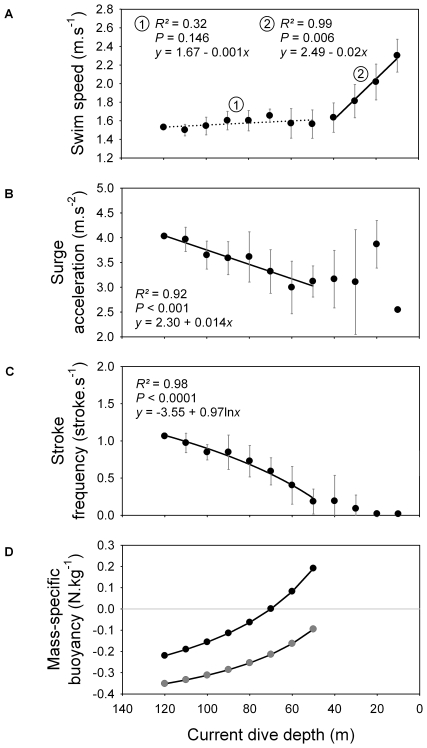Figure 5. (A) Swim speed, (B) surge acceleration, (C) foot-stroke frequency and (D) mass-specific buoyancy, in relation to current dive depth, for the ascent phase.
For each current depth class, values of swim speed, surge acceleration and foot stroke frequency were calculated as the mean (± S.D.) of the values calculated for different maximum dive depth categories (Fig. 2). For calculation of mass-specific buoyancy, see Appendix S1. Grey circles and black circles correspond to the theoretical buoyancy of birds that load the volume of respiratory air necessary for attaining neutral buoyancy at 40 m and 70 m, respectively. Because stroking activity of birds stops at an average depth of 54±11 m for dives >40 m (Fig. 7), the regression for each relationship was only calculated for this first part of the ascent, except for swim speed.

